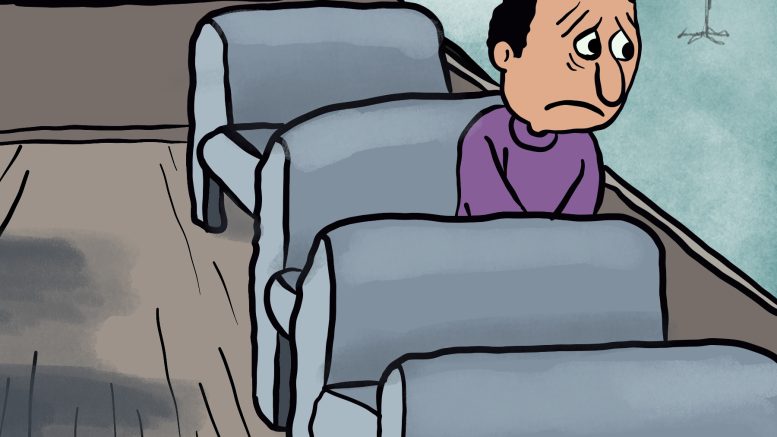The metal handles of Isbister’s doors are freezing against my ungloved hand. My breath is
visible through the vapour on my glasses, but as it begins to float away from my mouth and
up into the night, the roar of the BLUE line rips it and the snow falling alongside it down
Dafoe Road.
The street lamps bathe the bus stations in orange to create something like warmth, but no
lightbulb could win in a fair match against a Manitoban flurry’s chill. Yes, I think to myself as I
turn from the bus station to the parking lot, it’s cold again. I’ve done this plenty of times in the
past.
One more cold season in Winnipeg is just that — one more cold season. No matter how
black the ice on the highway gets, and regardless of how fast it becomes night now. Even
after my home has been reduced to a place to sleep, bathe and store my extra books, the
notion that this is “just one more cold season” is repeated like a clapper striking inside a bell.
Although the thought of cold is so loud in my head, outside it is nearly silent. Did you know
that snow can actually have an effect on the sounds you hear? The vibrating particles that
make up the wave that’s supposed to reach your ears becomes trapped in the open spaces
left in the gaps of a snowflake’s fractal pattern. It’s comforting to know I’m not the only one
for whom “quiet” has become even quieter.
Though short, the outdoor transitions that mark my movement between buildings and
buses and cars become marathons when the white landscape casts isolation over the city.
When your environment inspires strife, it tends to be pervading.
I notice more than usual when familiar faces fail to return a wave, or turn away when we
make eye contact. It’s not that it’s happening more. Instead, the silence that the snow
provides gives ample opportunity to think about these moments in greater clarity.
Seasonal affective disorder (SAD) is a brutal game.
For those afflicted with SAD, the changing of the seasons involves a number of factors
that can incite or aggravate depressive symptoms. Our circadian rhythms wage a vicious
conflict against the darkening sky, while the few molecules of serotonin you have left attempt
to keep your mood afloat.
Coupled with the exam season and the deadlines of final assignments, which loom only a
handful of weeks ahead, differentiating between sadness and SAD can become difficult —
like trying to make out voices in a snow storm.
It might seem that my perspective on this skews negatively, but it’s not like there are only
bad things when it comes to the onset of winter. I can stomach the windchill for a little bit
more to appreciate the way I can clearly see snow falling thanks to the artificial lighting that
occasionally dots the gloom.
The thing about winter I appreciate the most is the silence. It can’t be fully displaced from
being the basis of my negative thinking, but it isn’t an inherently negative thing itself.
Although the symptoms of SAD can play a role in disrupting your mood as the year winds
down, the discomforts of winter are issues that all who live in this climate must face in some measure. Silence is not necessarily an isolation, it’s only reflective. When frost and fog cover
the mirror, it’s common — if not fair — for perspectives to skew negatively.
Being conscious of this context is ultimately not enough to completely alleviate the feelings
of SAD. It’s only the first step in creating a narrative of mental health that isn’t fallible against
the cold.
Winter can be dark, and not only in terms of daylight. In the past, the season has served
as a period of hibernation, a time for hiding in silence and licking the wounds left by frostbite.
These days, an option to completely stop and rest through winter sounds like a luxury, so being
aware of your own condition can be what makes the difference between making it to spring or
remaining trapped by the snow of “just one more cold season.”


